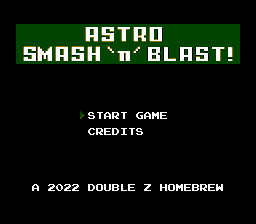
On Romhack Thursdays, we bring you interesting finds from the world of game modifications.
They have fallen into obscurity in the intervening decades, but it used to be that the Ultima games were some of the biggest RPGs around, and many still have fond memories of them. The story of the rise and fall of Origin Systems, once one of the biggest game publishers, and how now they’re just another of the hundred ignored lines on EA’s balance sheet, is not our business here today, but instead that of one fan’s effort to improve one of the less faithful adaptations: the NES version of Ultima Exodus.

Ultima and Ultima II (and their predecessor Akalabeth) were popular, but Ultima III was the first megahit version of the game, that could be considered to stand up today. Ultima I was pretty small, and Ultima II had a lot of crazy elements like space travel. Ultima III has a much more cohesive game world, a more detailed quest, and generally feels a lot more like what we would consider an RPG game now. Later games would build off of it and become even more popular, especially Ultima IV with its detailed morality system, and Ultima VII with its vast game world, depth of NPC interaction, and many system and UI improvements.

Back to Ultima III. One of its best-selling versions was the Famicom version in Japan, which had a bit of a media blitz around its release. Both the Ultima and Wizardry games had something of a second life on Japanese computer systems and consoles, where they would go on to sell millions of copies more. While EA’s ownership and neglect have meant that Ultima is mostly gone and forgotten*, in Japan new Wizardry games continue to be made, hewing to that series’ original dungeon crawl aesthetic.
* This is, honestly, partly to series creator Richard Garriott’s ownership of several important characters, meaning both parties have to agree to the other’s vision for any further official Ultima game to be made. And Garriott seems to be chasing fads lately; his most recent idea for a game utilizes that bane of all game design concepts, NFTs.

So now you have a little idea of what Ultima is. The Famicom/NES version was a hit in Japan, but it differs from the computer version in many ways. This was pretty much the norm for the many Japanese-made Famicom adaptations of Western games. An article could be usefully written on all the ways Famicom ports of RPGs differ from their originals. Maybe later.

The point of this romhack is to change the NES version of Ultima III: Exodus so it more matches up with the computer versions. It uses its own patching system, so Romhacking.net’s web-based patching system won’t be of use.
So many little things have changed in this version that it’s hard to talk about! At the very least, the graphics have received a complete overhaul. The cartoony figures of the original, which were pretty silly even back then, look a lot more appropriate for a series with the stature and legacy of classic Ultima games.

NES Ultima Exodus is also notorious for a number of significant bugs, including the absence of an important clue, it being impossible to cancel a character’s turn without wasting it, poorly differentiated character classes, and the lack of some of the monsters of the computer version. These have been fixed in this version. Some other niceties have been added, including character portraits for the people you talk to, which is really going above and beyond for a game like this!

It’s pretty much become the definitive console release of this landmark of computer RPG gaming! You should check it out if you have an interest in these things.



















